This week's new Non-Fiction book releases include a collection of articles from Patrick Radden Keefe, a biography of George Michael, and a look at the past and future of the beach resort, and more.
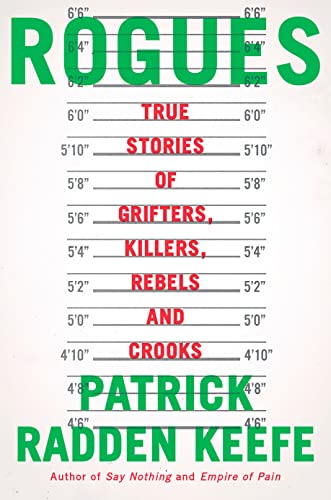
ROGUES
by Patrick Radden Keefe
From the prize-winning, New York Times bestselling author of Empire of Pain and Say Nothing—and one of the most decorated journalists of our time—twelve enthralling stories of skulduggery and intrigue
“I read everything he writes. Every time he writes a book, I read it. Every time he writes an article, I read it … he’s a national treasure.” —Rachel Maddow
“Patrick Radden Keefe is a brilliant writer, and each of these pieces reminds you that this world and the people in it are more interesting, complicated and moving than you had allowed yourself to imagine. ROGUES is a marvel, showcasing the work of a reporter at the absolute top of his game.” —Daniel Alarcón, author of The King is Always Above the People
Patrick Radden Keefe has garnered prizes ranging from the National Magazine Award to the Orwell Prize to the National Book Critics Circle Award for his meticulously-reported, hypnotically-engaging work on the many ways people behave badly. Rogues brings together a dozen of his most celebrated articles from The New Yorker. As Keefe says in his preface “They reflect on some of my abiding preoccupations: crime and corruption, secrets and lies, the permeable membrane separating licit and illicit worlds, the bonds of family, the power of denial.”
Keefe brilliantly explores the intricacies of forging $150,000 vintage wines, examines whether a whistleblower who dared to expose money laundering at a Swiss bank is a hero or a fabulist, spends time in Vietnam with Anthony Bourdain, chronicles the quest to bring down a cheerful international black market arms merchant, and profiles a passionate death penalty attorney who represents the “worst of the worst,” among other bravura works of literary journalism.
The appearance of his byline in The New Yorker is always an event, and collected here for the first time readers can see his work forms an always enthralling but deeply human portrait of criminals and rascals, as well as those who stand up against them.

GEORGE MICHAEL: A LIFE
by James Gavin
The definitive biography of George Michael, offering an expansive look at the troubled life of the legendary singer, songwriter, and pop superstar
George Michael was an extravagantly gifted, openhearted soul singer whose work was both pained and smolderingly erotic. He was a songwriter of true craft and substance, and his music swept the world, starting in the mid-1980s. His fabricated image—that of a hypermacho sex god—loomed large in the pop culture of his day. It also hid—for a time—the secret he fought against revealing: Michael was gay. Soon his obsession with fame would start to backfire. As one of the industry’s most privileged yet tortured men began to self-destruct, the press showed little sympathy. George Michael: A Life explores the compelling story of a superstar whose struggles, as well as his songs, continue to touch fans all over the world.
Acclaimed music biographer James Gavin traces Michael’s metamorphosis from the shy and awkward Georgios Kyriacos Panayiotou into the swaggering, dominant half of the leading British pop duo of the 1980s Wham!; he then details Michael’s sensational solo career and its subsequent unraveling. With deep analysis of the creative process behind Michael’s albums, tours, and music videos, as well as interviews with hundreds of his friends and colleagues, George Michael: A Life is a probing, definitive portrait of a pop legend.
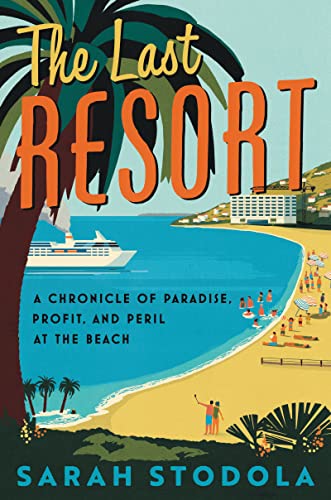
THE LAST RESORT
by Sarah Stodola
A captivating exploration of beach resort culture—from its roots in fashionable society to its undervalued role in today’s world economy—as the travel industry approaches a climate reckoning
With its promise of escape from the strains of everyday life, the beachhas a hold on the popular imagination as the ultimate paradise. In The Last Resort, Sarah Stodola dives into the psyche of the beachgoer and gets to the heart of what drives humans to seek out the sand. At the same time, she grapples with the darker realities of resort culture: strangleholds on local economies, reckless construction, erosion of beaches, weighty carbon footprints, and the inevitable overdevelopment and decline that comes with a soaring demand for popular shorelines.
The Last Resort weaves Stodola’s firsthand travel notes with her exacting journalism in an enthralling report on the past, present, and future of coastal travel.She takes us from Monte Carlo, where the pursuit of pleasure first became part of the beach resort experience, to a village in Fiji that was changed irrevocably by the opening of a single resort; from the overdevelopment that stripped Acapulco of its reputation for exclusivity to Miami Beach, where extreme measures are underway to prevent the barrier island from vanishing into the ocean.
In the twenty-first century, beach travel has become central to our globalized world—its culture, economy, and interconnectedness. But with sea levels likely to rise at least 1.5 to 3 feet by the end of this century, beaches will become increasingly difficult to preserve, and many will disappear altogether. What will our last resort be when water begins to fill the lobbies?

FIRE & STEEL
by Peter Caddick-Adams
The final volume in one of the most acclaimed works of military history of this generation.
Here is Peter Caddick-Adams’ third volume in his trilogy about the final year of the Western front in World War Two. Fire & Steel covers the war’s final 100 days-beginning in late January 1945 and continuing until May 8th, 1945, when the German high command surrendered unconditionally to all Allied
forces. Caddick-Adams’ previous two volumes in the acclaimed series-Sand & Steel, which covers the invasion of Normandy in June 1944, and Snow & Steel, the definitive study of the Battle of the Bulge, the German’s final offensive in the war-have set the stage for this concluding volume.
In these final months of World War Two, all of Germany is ablaze, from daily bombing runs launched from just across its borders and incessant artillery fire from the east. In the west, the Allied progress was inexorable, with Eisenhower’s seven armies taking on Germany’s seven armies, town by town,
bridge by bridge. With his customary narrative verve and utter mastery of the material, Caddick-Adams does these climactic final months full justice, from the capture of the Ludendorff Railway Bridge at Remagen, to the liberation of the Bergen-Belsen concentration camp, to the taking of Munich on
Hitler’s birthday, April 20th, and through to VE Day. Fire & Steel ends with the return of prisoners, demobilization of servicemen, and the beginning of the occupation of Germany.
A triumphant concluding volume to one of the most distinguished works of military history of this generation.

EXIT STAGE LEFT
by Nick Duerden
**INDEPENDENT BOOK OF THE MONTH**
**GUARDIAN BOOK OF THE DAY**
‘Incredibly moving.’ – Guardian
‘Entertaining.’ – Telegraph
‘Most books about pop stars focus on the way we turn average human beings into demi-gods. In writing a book about how they have to turn back into humans Nick Duerden has done both us and them a service.’ – David Hepworth
‘Funny, poignant and often inspirational.’ – Mat Osman
The desire for adulation is a light that never goes out. We live in a culture obsessed by the notion of fame – the heedless pursuit of it; the almost obligatory subsequent fallout. But what’s it like to actually achieve it, and what happens when fame abruptly passes, and shifts, as it does, onto someone else?
This is the point at which pop stars are at their most heroic, because they don’t give up. They keep on striving, keep making music, and refuse simply to ebb away. Some sustain themselves on the nostalgia circuit, others continue to beaver away in the studio, no longer Abbey Road, perhaps, so much as the garden shed. But all of them, in their own individual ways, still dare to dream.
Exit Stage Left features tales of drug addiction, bankruptcy, depression and divorce, but also of optimism, a genuine love of the craft, humility and hope. This is a candid, laugh-out-loud and occasionally shocking look at what happens when the brightest stars fall back down to earth.
Featuring brand new interviews with the likes of: Bob Geldof, Shaun Ryder, Robbie Williams, Roisin Murphy, Stewart Copeland, Billy Bragg, Wendy James, Alex Kapranos, Joan Armatrading, Leo Sayer, Gary Lightbody, Lisa Maffia, Tim Booth, Bill Drummond, Rufus Wainwright, David Gray, and Justin Hawkins.

I USED TO LIVE HERE ONCE
by Miranda Seymour
An intimate, profoundly moving biography of Jean Rhys, acclaimed author of Wide Sargasso Sea.
Jean Rhys is one of the most compelling writers of the twentieth century. Memories of her Caribbean girlhood haunt the four short and piercingly brilliant novels that Rhys wrote during her extraordinary years as an exile in 1920s Paris and later in England, a body of fiction―above all, the extraordinary Wide Sargasso Sea―that has a passionate following today. And yet her own colorful life, including her early years on the Caribbean island of Dominica, remains too little explored, until now.
In I Used to Live Here Once, Miranda Seymour sheds new light on the artist whose proud and fiercely solitary life profoundly informed her writing. Rhys experienced tragedy and extreme poverty, alcohol and drug dependency, romantic and sexual turmoil, all of which contributed to the “Rhys woman” of her oeuvre. Today, readers still intuitively relate to her unforgettable characters, vulnerable, watchful, and often alarmingly disaster-prone outsiders; women with a different way of moving through the world. And yet, while her works often contain autobiographical material, Rhys herself was never a victim. The figure who emerges for Seymour is cultured, self-mocking, unpredictable―and shockingly contemporary.
Based on new research in the Caribbean, a wealth of never-before-seen papers, journals, letters, and photographs, and interviews with those who knew Rhys, I Used to Live Here Once is a luminous and penetrating portrait of a fascinatingly elusive artist.
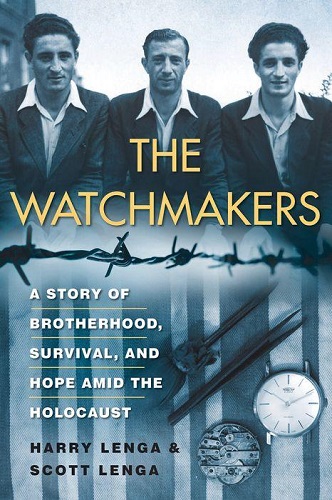
THE WATCHMAKERS
by Harry Lenga & Scott Lenga
Told through interviews with his son, watchmaker Harry Lenga’s extraordinary memoir of endurance, faith, and a unique skill that kept three brothers together—and alive—during the darkest times of World War II.
“Inspiring. Exhilarating. Astonishing. An epic tale of brotherhood, ingenuity, and survival.” —Heather Dune Macadam, International Bestselling author of 999: The Extraordinary Young Women of the First Official Jewish Transport to Auschwitz
“A truly extraordinary book.” —Damien Lewis, #1 international bestselling author
Harry Lenga was born to a family of Chassidic Jews in Kozhnitz, Poland. The proud sons of a watchmaker, Harry and his two brothers, Mailekh and Moishe, studied their father’s trade at a young age. Upon the German invasion of Poland, when the Lenga family was upended, Harry and his brothers never anticipated that the tools acquired from their father would be the key to their survival.
Under the most devastating conditions imaginable—with death always imminent—fixing watches for the Germans in the ghettos and brutal slave labor camps of occupied Poland and Austria bought their lives over and over again. From Wolanow and Starachowice to Auschwitz and Ebensee, Harry, Mailekh, and Moishe endured, bartered, worked, prayed, and lived to see liberation.
Derived from more than a decade of interviews with Harry Lenga, conducted by his own son Scott and others, The Watchmakers is Harry’s heartening and unflinchingly honest first-person account of his childhood, the lessons learned from his own father, his harrowing tribulations, and his inspiring life before, during, and after the war. It is a singular and vital story, told from one generation to the next—and a profoundly moving tribute to brotherhood, fatherhood, family, and faith.
“Deeply moving.” —Jesse Kellerman, bestselling author
“Vivid and compelling.” —Christopher R. Browning, Frank Porter Graham Professor of History Emeritus, University of North Carolina at Chapel Hill, and author of Ordinary Men
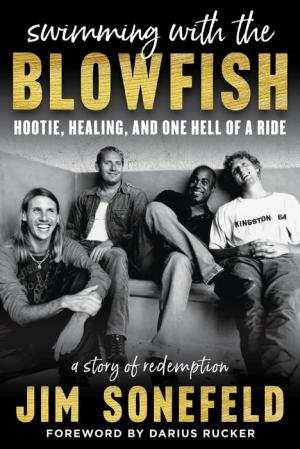
SWIMMING WITH THE BLOWFISH
by Jim Sonefeld
The ultimate front-row seat to the rise, fall, and rebirth of a band that was—for a time—the biggest in the world, Hootie & the Blowish, and Jim Sonefeld’s shattering and redeeming spiritual path from addiction to recovery and a more fruitful life
For a time, there was no bigger band in the world than Hootie & the Blowfish—rock & roll’s unexpected foil to the grunge music that dominated the early ’90s airwaves. In Swimming with the Blowfish, Jim Sonefeld, drummer and one of the band’s principal songwriters, reveals the inside story of the band’s humble beginnings, meteoric rise, sudden fall, and ultimate rebirth—and in the telling he opens his heart to readers about addiction, recovery, and faith.
Hootie became ubiquitous in the ’90s—their debut album Cracked Rear View was one of the best-selling in the history of rock music; they won two Grammy Awards; their live performances were played alongside the Dave Matthews Band, R.E.M., and even Willie Nelson and Neil Young; and they appeared at the biggest venues in the world. Though Jim enjoyed the perks that came with fame—the parties, the relationships, the money, the drugs and alcohol—eventually it all became a camouflage that hid a deeper spiritual malady. As his life was careening toward disaster, he reached out his hands to seek relief in twelve-step recovery, eventually settling into a loving, but by no means uncomplicated, homelife.
A book that encapsulates a band still beloved by legions of fans, Swimming with the Blowfish is much more—an unpretentious, emotional story of one man’s spiritual path to a more fruitful life. Jim’s journey is shattering, redeeming, and ultimately as comforting as your favorite flannel shirt.
Still Hot in Non-Fiction & Biography

JAMES PATTERSON
by James Patterson
“I felt I was interviewing James Patterson under the highest permissible dose of sodium pentothal, the truth serum, for hours—and he spilled the whole story of his truly astonishing life.”—Bob Woodward
“Damn near addictive. I loved it . . . that Patterson guy can write!” –Ron Howard
THE INSTANT #1 NEW YORK TIMES BESTSELLER—How did a kid whose dad lived in the poorhouse become the most successful storyteller in the world?
On the morning he was born, he nearly died.
His dad grew up in the Pogey– the Newburgh, New York, poorhouse.
He worked at a mental hospital in Massachusetts, where he met the singer James Taylor and the poet Robert Lowell.
While he toiled in advertising hell, James wrote the ad jingle line “I’m a Toys ‘R’ Us Kid.”
He once watched James Baldwin and Norman Mailer square off to trade punches at a party.
He’s only been in love twice. Both times are amazing.
Dolly Parton once sang “Happy Birthday” to James over the phone. She calls him J.J., for Jimmy James.
How did a boy from small-town New York become the world’s most successful writer? How does he do it? He has always wanted to write the kind of novel that would be read and reread so many times that the binding breaks and the book literally falls apart. As he says, “I’m still working on that one.”
James Patterson by James Patterson is the most anticipated memoir of 2022.

THE POPE AT WAR
by David I. Kertzer
INSTANT NEW YORK TIMES BESTSELLER • Based on newly opened Vatican archives, a groundbreaking, explosive, and riveting book about Pope Pius XII and his actions during World War II, including how he responded to the Holocaust, by the Pulitzer Prize–winning author of The Pope and Mussolini
“Splendid . . . The Pope at War ends much of the debate about the pope and surely makes any lingering apologia for his stance implausible.”—Ian Kershaw, author of Hitler: A Biography
When Pope Pius XII died in 1958, his papers were sealed in the Vatican Secret Archives, leaving unanswered questions about what he knew and did during World War II. Those questions have only grown and festered, making Pius XII one of the most controversial popes in Church history, especially now as the Vatican prepares to canonize him.
In 2020, Pius XII’s archives were finally opened, and David I. Kertzer—widely recognized as one of the world’s leading Vatican scholars—has been mining this new material ever since, revealing how the pope came to set aside moral leadership in order to preserve his church’s power.
Based on thousands of never-before-seen documents not only from the Vatican, but from archives in Italy, Germany, France, Britain, and the United States, The Pope at War paints a new, dramatic portrait of what the pope did and did not do as war enveloped the continent and as the Nazis began their systematic mass murder of Europe’s Jews. The book clears away the myths and sheer falsehoods surrounding the pope’s actions from 1939 to 1945, showing why the pope repeatedly bent to the wills of Hitler and Mussolini.
Just as Kertzer’s Pulitzer Prize–winning The Pope and Mussolini became the definitive book on Pope Pius XI and the Fascist regime, The Pope at War is destined to become the most influential account of his successor, Pius XII, and his relations with Mussolini and Hitler. Kertzer shows why no full understanding of the course of World War II is complete without knowledge of the dramatic, behind-the-scenes role played by the pope. “This remarkably researched book is replete with revelations that deserve the adjective ‘explosive,’” says Kevin Madigan, Winn Professor of Ecclesiastical History at Harvard University. “The Pope at War is a masterpiece.”
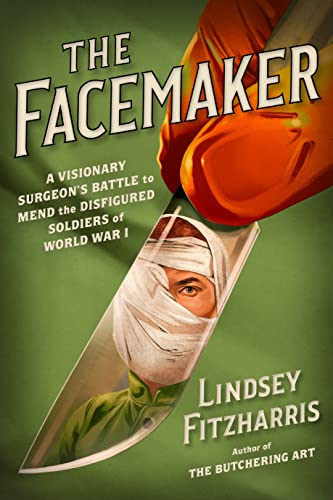
THE FACEMAKER
by Lindsey Fitzharris
A New York Times Bestseller
“Enthralling. Harrowing. Heartbreaking. And utterly redemptive. Lindsey Fitzharris hit this one out of the park.” ―Erik Larson, author of The Splendid and the Vile
Lindsey Fitzharris, the award-winning author of The Butchering Art, presents the compelling, true story of a visionary surgeon who rebuilt the faces of the First World War’s injured heroes, and in the process ushered in the modern era of plastic surgery.
From the moment the first machine gun rang out over the Western Front, one thing was clear: humankind’s military technology had wildly surpassed its medical capabilities. Bodies were battered, gouged, hacked, and gassed. The First World War claimed millions of lives and left millions more wounded and disfigured. In the midst of this brutality, however, there were also those who strove to alleviate suffering. The Facemaker tells the extraordinary story of such an individual: the pioneering plastic surgeon Harold Gillies, who dedicated himself to reconstructing the burned and broken faces of the injured soldiers under his care.
Gillies, a Cambridge-educated New Zealander, became interested in the nascent field of plastic surgery after encountering the human wreckage on the front. Returning to Britain, he established one of the world’s first hospitals dedicated entirely to facial reconstruction. There, Gillies assembled a unique group of practitioners whose task was to rebuild what had been torn apart, to re-create what had been destroyed. At a time when losing a limb made a soldier a hero, but losing a face made him a monster to a society largely intolerant of disfigurement, Gillies restored not just the faces of the wounded but also their spirits.
The Facemaker places Gillies’s ingenious surgical innovations alongside the dramatic stories of soldiers whose lives were wrecked and repaired. The result is a vivid account of how medicine can be an art, and of what courage and imagination can accomplish in the presence of relentless horror.
